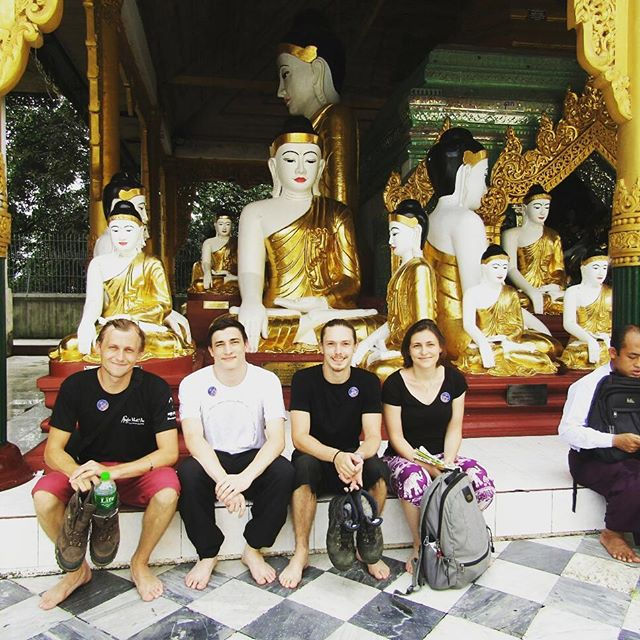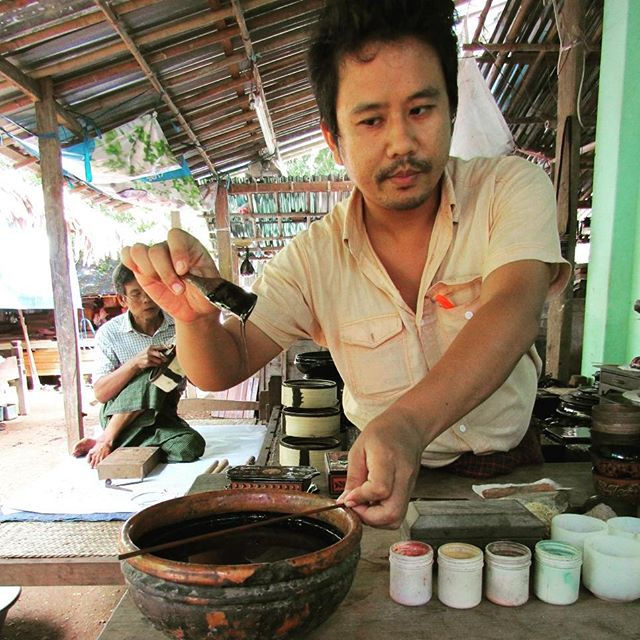Myanmar: The Land of Golden Pagodas
- Angus
- Oct 14, 2017
- 3 min read
Myanmar, or formally Burma, was long-considered a pariah state much like today's North Korea with a history of colonisation, internal conflict and military dictatorships. It was only in 1992 that Myanmar opened its country to tourism and it has seen that industry begin to steadily increase thanks to a combination of stunning scenery, fascinating history and friendly populace. To get there we opted for the short flight from Bangkok to Yangon and caught up with Jude, Leon and Rhodri upon arrival in Myanmar. Yangon
Though it is the biggest city in Myanmar, Yangon feels quite small and laid back. The main attraction is the Shwedagon Pagoda, an impressive 100 metre tall pagoda that dominates the Yangon skyline and has been the place of pilgrimage for many centuries for Buddhists. The structure is comprised of gold, diamonds and gems that are worth in excess of US$5 billion (which is more than 5% of Myanmar's GDP). There are four entrances that lead to the top of the pagoda along which pilgrims may purchase all sorts of offerings to be placed at the top.


We stayed at the Clover Suites Royal Lake Yangon (courtesy of the parents) which had a rooftop bar and restaurant as well as a swimming pool and gym. The WIFI was surprisingly decent and the rooms were clean, spacious and well supplied which was a nice change from the hostels we were used to!
Travelling from place to place in Myanmar overland takes considerable amounts of time, so you'll likely be taking advantage of the overnight buses if your time is short. Luckily this isn't as bad as you might think, in fact JJ Express could rival Singapore Airlines for its overnight service which includes a really comfortable reclining chair, pillow and blanket, dinner and breakfast, water and a choice of films on personal screens. Needless to say we were thoroughly impressed and all for the price of 10 bucks!!
Old Bagan
After a comfortable 8 hour bus journey from Yangon we arrived in the ancient city of Bagan, located in the Mandalay region of Myanmar. The Bagan Archaeological Zone is seen as a rival to Cambodia's Angkor Wat whilst being far less crowded. To get around we hired electric scooters and although it was pissing it down for much of the day, we enjoyed the drive through the country side which was filled with hundreds of temples hidden in the forest. We finished the day by watching the sunset from the main temple.
The second day we accidentally managed to find ourselves in a lacquerware workshop run by the Jasmine Family Lacquerware Workshop. The family that run this workshop are extremely knowledgeable and provided us with a run through of how Lacquerware is made, how to tell whether it is made cheaply or not and then showed us around their shop. They even threw in a free water and some tamarind sweets as it was a hot day.



Inle Lake
The second largest lake in Myanmar, Inle Lake, spans an area of 116 square kilometres. We stayed in Nyaungshwe on the Northern end of the lake. The main attraction in this area, of course, is to take a boat tour of the lake where you can pick and choose from a variety of options ranging from temples to floating markets and villages. On our trip we ventured to the floating villages where we were shown how life on the lake sustains itself through floating farms and markets. Among other stops, we visited a traditional lotus and silk weaving shop, a goldsmith and a tobacconist (all of whom accepted credit card). Barring the lotus shop, you often stopped to think why on earth would they set up shop in the middle of a lake. Our best guess was it may have something to do with property rights but who knows. Nyaungshwe doesn't really have much else going for it. If you are looking for a quiet pint and a game of pool the only place in town we found was Pub Asiatico.
Mandalay
Our return flight to Thailand was leaving from Mandalay and to be honest we did not get up to much when we were there. A quick browse of things to do revealed that Mandalay Hill was a top thing to do in the city. However, having taken the long walk up the hill we found out that there was not actually a view of the city and were left bitterly disappointed (and tired).









Comments